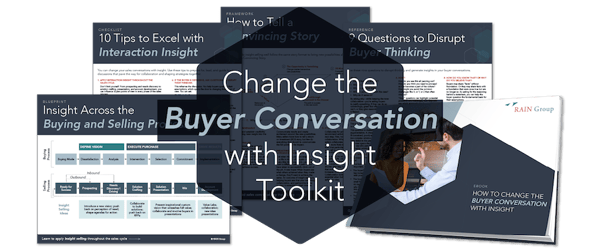What Is Business Development?
Business development is the process of growing an organization, fostering opportunities, and expanding revenue. For professionals, business development often means bringing in new business, developing relationships, uncovering needs and opportunities, communicating value, demonstrating impact, and expanding accounts.
When it comes to business development for professional services, one of the biggest challenges professionals face is finding time to do it all. After all, you don't sell full-time. Your work, whether it's consulting, accounting, IT, financial services, or engineering, is what you do full-time. It can be very difficult to find time to create and nurture the relationships necessary to bring in new business.
Many professionals feel there simply aren’t enough hours in the day to do it all.
As a result, business development activities are unplanned and inconsistent, which leads to limited touches and prospects slipping through the cracks due to lack of follow-up.
You only have so many hours in the day, but you can learn to integrate business development into your daily workflow and balance selling and doing.
Planning Your Business Development Strategy
- Benefits of Business Development
- Business Development Strategy
- 9 Business Development Tips
- Do a Little Bit Every Day
- Make Action a Priority
- Keep Efforts Organized
- Fill Your Pipeline
- Build Awareness and Grow Your Reputation
- Focus on Efforts That Offer the Best Chance of Success
- Sustain and Build Client Relationships
- Leverage Your Resources—Both People and Technology
- Build Your Business Development Skills
- The Impact of Business Development
- Putting It All Together
Benefits of Business Development
Many professionals believe they don’t need to concern themselves with business development. There’s a common belief that your work should speak for itself. If you build it, they will come. In addition, professionals receive little guidance on business development, if any.
While it would be ideal to grow business based on reputation alone, this isn’t usually how it works out. Competition is fiercer than ever. You need to differentiate yourself and assert your value in an environment saturated with information.
Professionals who succeed don’t just wait for opportunities to come to them. While others are scrambling to recover when sales dry up, the most successful professionals are constantly working to bring in new clients and expand their key accounts. They actively build their pipelines and ensure a predictable flow of revenue.
And when you sell your organization’s full capabilities, you uncover opportunities for your clients they otherwise might not have known about.
 Make a plan and commit to it. Learn how to set and reach your business development goals with our Goal-Setting Worksheet.
Make a plan and commit to it. Learn how to set and reach your business development goals with our Goal-Setting Worksheet.
Business Development Strategy
Your approach to business development is highly dependent on your role and industry.
However, a good place to start with your business development strategy is by creating a plan. This plan should be specific, geared toward long-term success, and aligned with your overall career and organizational goals.
Creating a Business Development Plan
To create an effective business development plan, consider following this 5-step process:
- Set Your Goals: Begin by thinking about your business development goals in terms of the big picture. What do you want to achieve in the long term? Categorize your goals into big picture (5+ years), 3-year, and annual objectives. For example:
- Big Picture: Become a recognized industry expert and grow my client base by 200%
- 3-Year: Develop a strong network of referral partners and increase revenue by 50%
- Annual: Acquire 10 new clients and increase my business development skills
- Plan Your Actions: Once you've established your goals, create a path to reach them. Break down your annual goals into quarterly, monthly, and weekly actions. For instance:
- Quarterly: Attend two industry conferences and give one presentation
- Monthly: Conduct five discovery calls with potential clients
- Weekly: Spend 3 hours on prospecting activities
- Change Your Habits: Identify the behaviors and habits you need to change or develop to support your business development goals. Examples might include:
- Dedicating the first hour of each day to business development activities
- Following up with new contacts within 24 hours of meeting them
- Regularly sharing insights and content on social media platforms
- Manage Your TIME: Focus on maximizing your Treasured and Investment time while minimizing Mandatory and Empty time. In the context of business development this might mean:
- Treasured: Networking with industry peers at events you enjoy
- Investment: Researching potential clients and preparing tailored proposals
- Mandatory: Updating your CRM and activity reports
- Empty: Excessive time spent on non-essential emails or unproductive meetings
- Set Boundaries and Avoid Distractions: To stay committed to your business development goals, become "impossible to distract." Create a "to-don't" list to help you stay focused:
- Don't check emails during your dedicated business development time
- Don't accept every meeting invitation without evaluating its relevance to your goals
- Don't spend time on low-value prospects that don't align with your ideal client profile
By following this structured approach to planning your business development activities, you'll be better equipped to identify and pursue growth opportunities that align with your long-term objectives. Remember to review and adjust your plan regularly to ensure it remains relevant and effective as your business evolves.
RAIN Group has worked with hundreds of global and regional professional services firms to help them build business development skills, develop a culture of business development success, and grow their accounts.
Learn more about business development training for:
9 Business Development Tips
Half of a good business development strategy is committing to a plan. The other half is knowing how to execute—and these 9 tips can help keep you accountable and consistent.
1. Do a Little Bit Every Day
The excuses for not selling are plentiful: I was busy delivering, I had to run a report, a meeting went long—the list goes on. To be successful, you must make business development a priority. Start by setting aside a little bit of time every day to focus on your sales and business development.
Mornings tend to work best, before you get caught up in the hustle and bustle of the day. Block this time off in your calendar, close your door, and don't allow any interruptions. This is your sacred selling time.
2. Make Action a Priority
How many times have you thought, "I should really give Jim Smith at ABC Manufacturing a call to follow up on our conversation from last week, but I don't have time right now. I'll do it later."
Later never comes.
When you think about doing something, do it (or at least set a reminder to do it during your sacred selling time). Half of business development is consistent execution, yet so many professionals get caught up in their other work and don't make business development a priority.
3. Keep Efforts Organized
Business development can be a daunting task when you don’t keep all your contacts, leads, and activities in the same place. To make your sales and analytics most effective, use a CRM tool to keep track of your sales conversations.
Take good notes. At the end of each conversation, set a solid next step for yourself and record this in your CRM. This will help you stay organized and prioritize your follow-up and sales efforts.
4. Fill Your Pipeline
Many professionals avoid prospecting, unsure of how to reach their audience and set meetings. Prospecting works best when it’s done consistently and with an approach that incorporates multiple channels and touches.
Whether you’re directly selling or not, business development thrives when you proactively take the time to identify new prospective clients and opportunities. This can mean qualifying leads or conducting broader campaigns to build awareness of your organization. We’ll cover both below.
Toolkit: Sales Prospecting Made Simple. >>
5. Build Awareness and Grow Your Reputation
This facet of business development has significant overlap with marketing. If you want to bring in new opportunities, you need to grow your reputation, establish trust, and build awareness among potential buyers.
Depending on your budget, responsibilities, and support from the rest of your team, you might incorporate one or more of these methods into your brand awareness campaigns:
- Content marketing: Establish yourself as a thought leader in your industry with content based around your areas of expertise.
- Referral generation: Referrals are among the best ways to bring in new business. Make yourself and your organization referral-ready and proactively solicit referrals from happy clients.
- Networking: It’s up to you to speak for yourself, your work, and your organization. Networking has traditionally been associated with live events, but today, networking also happens in virtual gatherings and on social media.
6. Focus on Efforts That Offer the Best Chance of Success
Know where to spend the sacred selling time you have. Often, it takes just as much time and effort to sell a $50,000 deal as it does to sell a $150,000 deal. Focus on deals that have the greatest potential for long-term success. The time you put into lead qualification has the potential to save you much more later on.
To do this, use an effective system for qualifying leads. Otherwise, you risk spending excess time on opportunities that aren’t good fits.
Don’t rely on asking for a budget upfront. Instead, do your homework and go into conversations prepared to uncover buyer needs and learn what your prospective client values. Use the FAINT definition of a qualified buyer as your framework:
- Funds: Even if you aren’t asking about budget, you should have a sense of whether the prospect has the means to buy from you.
- Authority: Prioritize speaking with people who have decision-making power. This is why reaching executive-level buyers is so important.
- Interest: How interested and engaged is your prospect? If they aren’t, they may not be a good fit—or you may need to bring new ideas and perspectives to your conversations and show them what’s possible.
- Need: What specific needs can you help your prospect address? Many may not be apparent. Take the time in your conversations to ask incisive questions and allow all needs to surface.
- Timing: For any given prospect, you must learn where they are in the buying process. This may require time and conversations with multiple decision-makers, but once you know your prospect’s purchase intent and timeline, you can build your plan accordingly.
In The 7 Habits of Highly Effective People, Steven Covey writes, "Put first things first." He suggests focusing on work that is less urgent but more important to your long-term goals.
Apply that thinking to your business development efforts. Know where the highest potential is and focus on those prospects first.
7. Sustain and Build Client Relationships
For professionals, business development has significant overlap with the practice of strategic account management. When it comes to expanding revenue, your existing accounts are a major source of untapped potential.
Build a process for monitoring and engaging with your existing accounts. You can call this upselling or cross-selling—but think long-term relationship building. If you’re responsible for client support, be prompt and find opportunities to drive value with every interaction.
8. Leverage Your Resources—Both People and Technology
Make your life easier by delegating when possible. Do you need to write the proposal and follow-up materials or can a junior staffer or virtual assistant sit in on the sales meeting and write the first draft? Do you need to write follow-up emails after you speak at an event or can you hand this off to the marketing team?
When you leverage your resources well, you can get more done for your clients and prospects and create more time to focus on business development and relationship building. Resources don’t just include people; leverage your tech tools as well.
Automate some of your lead nurturing by sending emails that provide valuable insights to prospects. Connect with prospects and clients on LinkedIn. Publish a blog and post regularly. These tools can help you build and strengthen your relationships. They also help you stay top of mind with clients and prospects, so when the need arises, you’re the first one they think of.
9. Build Your Business Development Skills
If you’re a consultant, accountant, engineer, or other professional service provider, you likely came up through the ranks building knowledge around your technical skills or area of focus. Perhaps you’ve had very little business development training and you’re not comfortable with it.
But I have a secret to share with you: the skills that make you a great service provider to your clients are also the skills that will make you great in sales. You just need to know how to apply those skills.
The Impact of Business Development
Stop stressing out about your long to-do list. Follow these business development tips, and your days could look something like this:
It's Friday morning and you've blocked off three hours for uninterrupted sales time. You sit down at your computer, and an alarm goes off instructing you to call back Jessica Smith of Smith & Jones Manufacturing, whom you met at an industry event two weeks ago.
You open up your contact management system, peruse your notes, and see that Jessica is a Boston Celtics fan. You pick up the phone and call her, making a point to congratulate her on her team's recent win.
The conversation continues and you mention how you read a Harvard Business Review article that relates to the manufacturing industry. When the conversation ends, you set a task in your calendar to follow up with Jessica next month. There's no immediate need, but you know you can help Jessica's business be more successful in the long term. Using your CRM, you add her to your e-newsletter list and send a quick email to one of your associates, asking him to retrieve the article from HBR and send it to Jessica.
You move on to the next person on your list. By the time noon rolls around, you've moved four leads forward and left messages for ten others.
This afternoon, you're off to deliver that big consulting project you've been working on all month.
The result: your sales efforts are consistent and organized. You're developing relationships and moving prospects to the next stage of the pipeline. And it's all because you made the time and added selling to your priority list.
Putting It All Together
Effective business development is about consistent, strategic actions integrated into your daily routine. By implementing the strategies and tips outlined in this article, you can transform your approach to business development:
- Create a structured plan with clear goals and actionable steps
- Dedicate time each day to business development activities
- Focus on high-potential opportunities and build meaningful relationships
- Leverage your resources and continuously improve your skills
- Stay organized and make follow-up a priority
The most successful professionals don't just wait for opportunities—they create them. By making business development a consistent part of your professional life, you'll ensure a steady stream of new clients, expanded accounts, and long-term success.
Start small, be consistent, and watch as your efforts compound over time. Your future self will thank you for the business development habits you build today.






